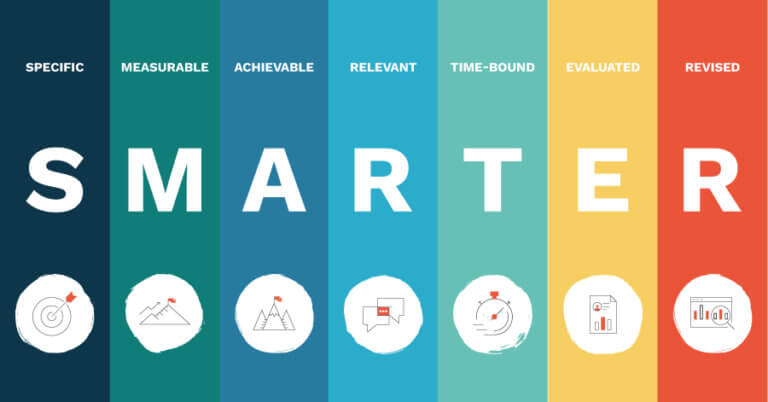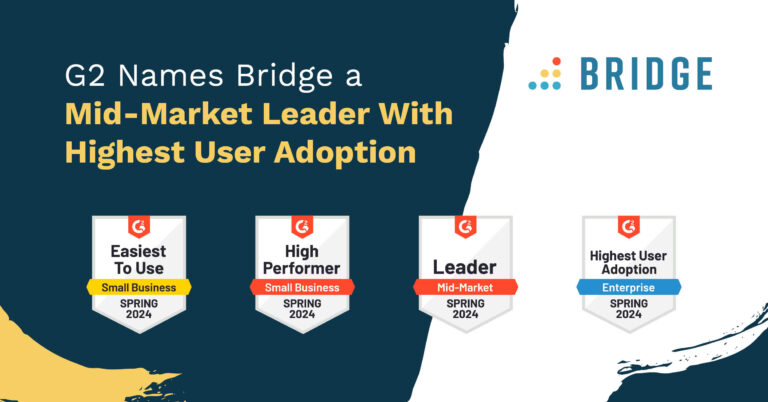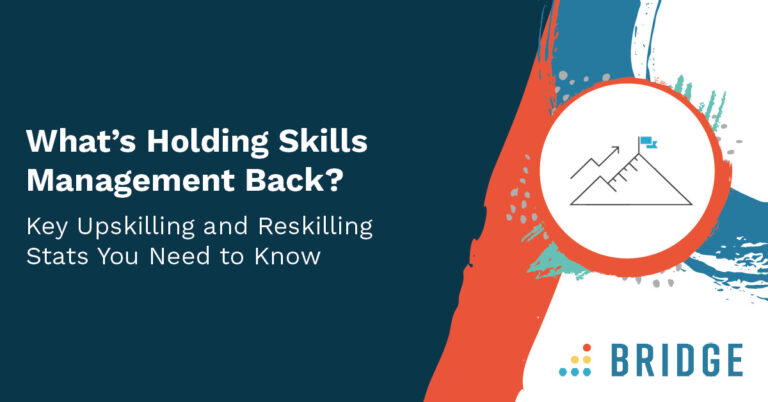If you want to improve your people’s productivity, you’ll need a way to measure it—which means you’ll need the right metrics. And that’s where using SMARTER goals comes in…
When your teams are working remotely part or all of the time, it’s no longer possible to assess productivity by keeping an eye on how busy your people look. In fact, displaced working is increasingly viewed as an opportunity to take a fresh look at how best to measure productivity. By placing less of an emphasis on where and when work gets done, you can redirect your attention towards achieving good business outcomes.
Outcomes are harder to keep track of than traditional markers of productivity like inputs and outputs. If nothing else, there’s a diverse array of possible outcomes to drive towards, and your organization’s desired outcomes are likely to change in line with new circumstances.
However, by thinking about the outcomes you want, communicating those needs to your people, and translating them into tangible goals, you’ll gain a series of handy metrics against which you can measure employee productivity.
Examples of Key Outcomes
Outcomes can come in all shapes and sizes, from business-wide objectives to worker-specific goals. They include:
- Increases in profits
- Higher market share
- Stronger investor relationships
- Improved customer satisfaction scores
- Improved business processes
- Better worker retention
- Stronger workforce engagement
- Increased onboarding and hiring speed
- Stronger customer loyalty
Measuring Outcomes
Some outcomes are easy to measure. Increased profits and improved customer satisfaction scores are simple figures that any organization can produce and compare with past performance to determine whether their people are being more productive.
Other outcomes, however, are less clear. Better workforce engagement and worker satisfaction aren’t always immediately quantifiable, but their impact on productivity is undeniable.
This doesn’t mean these less visible metrics can’t be used to measure employee productivity. It does, however, mean that you’ll need to work with your people to craft individual goals that can be expressed through numbers and aligned with your broader business objectives.
MORE FROM THE BLOG | ‘Get Aligned: 3 Ways to Keep Employees Aligned With Organizational Goals’
From Goal-Setting Exercises to Productivity Metrics
Let’s say that you want to improve your organization’s online presence. This is a broad, tangible business objective, and there’s no question that a more productive workforce will be able to get this done in good time.
By getting specific about your objectives, you’ll be in a better position to find a hard productivity metric that enables you to measure employee productivity.
In this case, you might collaborate with your people to find out what kind of individual goals will give them a sense of progression and achievement while contributing to your overarching objective.
With guidance, your digital marketing team could choose, for example, to increase web traffic by 25% in the next quarter. This is a “hard” metric accompanied by a reasonable deadline, and—crucially—this metric can become a yardstick against which any increases in productivity can be measured for the next three months.
With the right performance and skills management platform, you’ll be able to set whatever progress metrics suit your people’s goals: from numeric or currency-based options to percentages or simply the number of completed subtasks.
THINKING ABOUT MEASURING PRODUCTIVITY VIA TRACKERS? | ‘The Trouble With Tracking: Why Employee Accountability Processes Shouldn’t Be Invasive’
The Value of SMARTER Goals
Not all goals will be easy to measure. And, in some circumstances, they don’t need to be. Good performance management platforms will mix “hard” metrics with “softer” varieties, perhaps by providing peer-to-peer feedback opportunities in which employees are asked to verbally describe the impacts and outcomes that relate to their colleagues.
At the same time, platforms like Bridge will facilitate creating “hard” metrics by enabling you and your people to set SMARTER goals. The acronym runs as follows:

Specific
Specificity is essential in any measure of productivity—for the simple reason that outcome-based productivity can be difficult to measure at the best of times! In the above example, an increase in web traffic is a highly specific goal to build around.
Measurable
Your people’s goals can be a great way to measure their productivity—provided you can measure the goals themselves! In the above example, our hypothetical employee was tasked with increasing web traffic by 25%: a clear figure to aim for.
Achievable
You’ll notice that we’ve opted for a 25% increase, as opposed to 500%. While the latter figure would be great, it’s essential to keep things realistic and proportionate. Otherwise, a fulfilling and motivating exercise can quickly become demoralizing—and a demoralized employee definitely isn’t a productive one.
Relevant
Though your people should absolutely have a hand in choosing their own goals, it’s worth offering a guiding influence in the form of a manager or leadership figure who can direct their enthusiasms in the right direction. Your digital marketing lead might want to improve their trombone skills, but that’s unlikely to have much of an impact on website performance!
Time-bound
In the above example, we’ve chosen to set the goal over a three-month period. Without an endpoint, the goal becomes meaningless—and the aim of the game is to derive as much useful information as possible from any goals we set.
Evaluated
If you’re using SMARTER goals to measure productivity, evaluation is a vital part of the process. After all, you’ll want to know how well your people are progressing—and evaluating that progress can form part of your frequent 1:1s.
Revised
No matter how well-crafted your people’s goals and career objectives may be, no target is immune to shifts in priority or changes outside your control. Leaving your people’s goals subject to revision is especially important if you want to make sure they’re always aligned with the shifting needs of your organization as a whole.
MORE ABOUT GOALS | ‘Goal Setting: The Role of Peer Reinforcement in Learning and Development’
Accountability Built on Respect
When you’re looking to measure employee productivity in an instantly interpretable manner, these goal-based principles are invaluable. The right goals, when set in the right way, will act as the perfect metrics for assessing your people’s productivity by directing you towards outcomes rather than outputs.
Better still, collaborating on your goal-setting exercises by letting people choose their own (relevant!) goals will create a feeling of trust and respect among employees who will only work harder as a result.
Want to Learn More?
This blog post is an extract from our ebook, ‘How to Measure Employee Productivity’. If you’d like to learn how to accompany your productivity metrics with a firm strategy for improving individual productivity, download our full ebook today.



